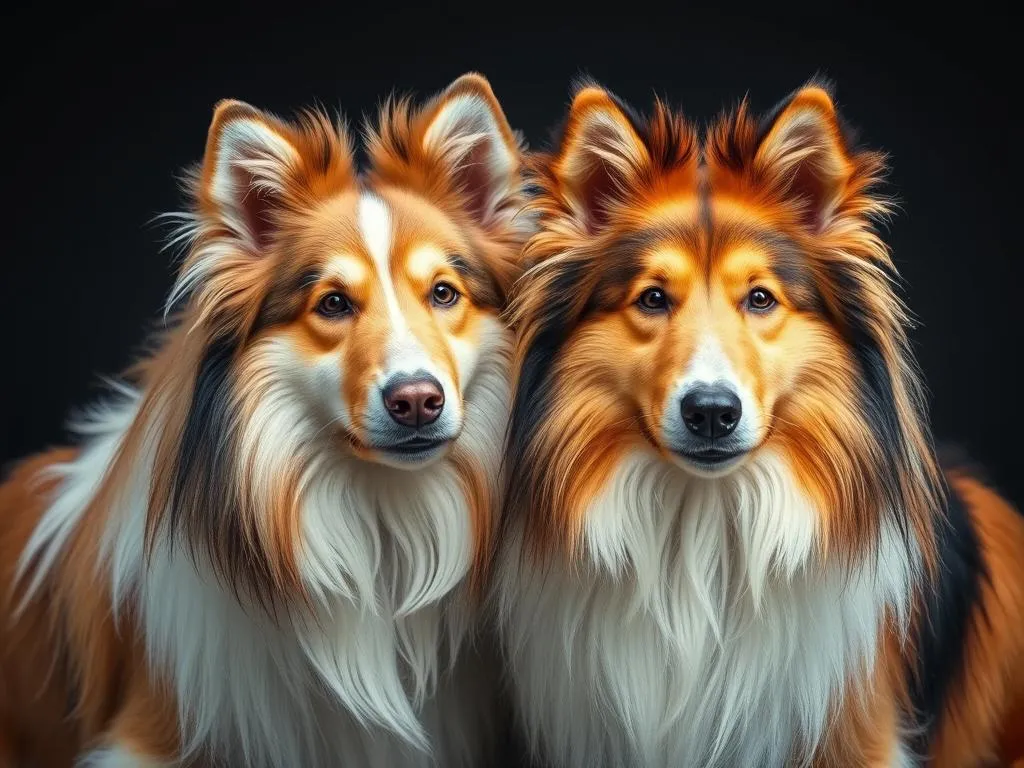
Introduction
Shetland Sheepdogs, affectionately known as Shelties, are a charming breed with a rich history and a reputation as wonderful family pets. Originating from the Shetland Islands of Scotland, these dogs were initially bred for herding sheep and other livestock. Their intelligence, agility, and affectionate nature have made them increasingly popular in households around the world.
Understanding the nuances between male vs female Shetland Sheepdogs is crucial for potential owners. Each gender exhibits distinct behavioral traits and physical characteristics that can significantly influence their compatibility with different lifestyles and family dynamics. This article aims to provide a detailed comparison of male and female Shetland Sheepdogs, helping prospective owners make informed decisions.
Overview of Shetland Sheepdogs
History and Origin
The Shetland Sheepdog has a fascinating history that dates back to the 19th century. Originally bred by farmers in the Shetland Islands, these dogs were designed to assist in herding small livestock like sheep and ponies. Their intelligence and work ethic made them invaluable companions on the farm.
As the breed developed, it gained popularity not only for its herding abilities but also for its companionship. The Sheltie’s small size and gentle demeanor allowed it to adapt well to family life, making it a favored choice for households seeking a loyal, trainable pet.
General Characteristics
Shetland Sheepdogs typically stand between 13 to 16 inches tall and weigh between 20 to 40 pounds. They boast a double coat that is thick and water-resistant, available in various colors, including sable, black, and blue merle. Their lifespan averages between 12 to 14 years, but like all breeds, they are susceptible to certain health issues, including hip dysplasia and eye disorders.
Male Shetland Sheepdogs
Physical Characteristics
Male Shetland Sheepdogs tend to be slightly larger than their female counterparts, with an average weight ranging from 25 to 40 pounds. They often exhibit a more robust build, with a broader head and larger bone structure. Males typically have a more pronounced mane, giving them a majestic appearance.
Temperament and Behavior
In terms of temperament, male Shelties are often described as playful, energetic, and sometimes a bit more aloof than females. They can be very affectionate but may take longer to bond with new family members. Males often exhibit a strong desire to please their owners, which can make training relatively straightforward.
Socialization is essential for male Shetland Sheepdogs, as they can display territorial behavior if not properly introduced to new people and pets. Their playfulness often translates into higher energy levels, which necessitates ample exercise and mental stimulation.
Training and Exercise Needs
Male Shetland Sheepdogs are quick learners and respond well to positive reinforcement training methods. It’s essential to start training early to instill good habits and prevent behavioral issues. Recommended exercises include daily walks, playtime in a secure yard, and engaging activities that challenge their intelligence, such as agility training.
Health Considerations
Common health issues for male Shetland Sheepdogs include hip dysplasia, eye problems like Progressive Retinal Atrophy (PRA), and skin conditions. Their lifespan is generally comparable to that of females, but males can sometimes face specific health challenges related to their size and physical activity levels.
Female Shetland Sheepdogs
Physical Characteristics
Female Shetland Sheepdogs are usually smaller than males, weighing between 20 to 35 pounds. They have a more delicate frame and a slightly finer bone structure. Females often possess a more refined and feminine appearance, characterized by a smoother coat and more subtle facial features.
Temperament and Behavior
Female Shelties are known for their nurturing and affectionate nature. They tend to bond quickly with family members and are often more in tune with their owner’s emotions. This maternal instinct can make them excellent companions, particularly for families with children.
In terms of socialization, female Shetland Sheepdogs generally adapt well to new situations and introductions. Their affectionate nature often leads them to be more engaging and interactive with both people and other pets.
Training and Exercise Needs
Like males, female Shetland Sheepdogs are intelligent and eager to learn. They respond well to positive reinforcement and are often more sensitive to their owner’s tone and cues. Regular training sessions and socialization are crucial for their development.
Exercise needs for female Shelties are similar to those of males, requiring daily walks, playtime, and mental challenges. Their energy levels can vary, but they typically enjoy interactive games that stimulate their minds as well as their bodies.
Health Considerations
Health issues in female Shetland Sheepdogs can include similar conditions as those found in males, such as hip dysplasia and eye disorders. However, females may be susceptible to reproductive health issues, including complications during heat cycles and potential infections. Regular veterinary check-ups are crucial to monitor their health and longevity.
Male vs Female Shetland Sheepdogs: A Comparative Analysis
Behavioral Differences
When comparing the behavioral traits of male vs female Shetland Sheepdogs, it’s evident that there are some distinct differences. Males tend to be more independent and sometimes stubborn, while females often display a stronger desire to be in close contact with their owners. Males may exhibit more protective behaviors, while females generally have a more nurturing disposition.
Training and Adaptability
Training responsiveness can vary between the genders. Males may require more consistent and firm guidance, whereas females often respond better to gentle encouragement. Both genders are highly trainable, but females may adapt more quickly to new environments and changes within the household.
Health and Lifespan
Health considerations for Shetland Sheepdogs often overlap between genders, but certain issues may be more prevalent in males or females. For example, males may face more pronounced orthopedic issues due to their size and activity levels. In contrast, females may encounter reproductive health issues. Lifespan differences are minimal, but environmental factors and care play a significant role in overall health.
Choosing Between a Male or Female Shetland Sheepdog
Factors to Consider
When deciding between a male or female Shetland Sheepdog, it’s essential to consider your family dynamics, lifestyle, and personal preferences. For instance, if you have young children, a female may be more nurturing and attentive. Conversely, a male might be a better fit for an active family looking for a playful companion.
Consultation with Breeders and Trainers
Consulting with breeders and trainers can provide valuable insights into the characteristics of individual dogs. They can help match you with a Sheltie that suits your lifestyle and preferences. Questions to ask potential breeders include inquiries about the temperament of the parents, socialization practices, and any health testing performed on the breeding stock.
Conclusion
In conclusion, understanding the differences between male vs female Shetland Sheepdogs can significantly impact your experience as a pet owner. While both genders possess unique traits that contribute to their charm, individual personality and lifestyle fit should guide your decision. Ultimately, whether you choose a male or female Sheltie, you can look forward to a loyal companion that brings joy and love to your home.
Frequently Asked Questions (FAQs)
Are male Shetland Sheepdogs more affectionate than females?
While both genders are affectionate, females typically exhibit a stronger nurturing instinct, making them more inclined to be cuddly and attentive.
Do female Shetland Sheepdogs shed less than males?
Shelties generally shed the same amount regardless of gender; however, individual shedding can vary based on factors like diet, health, and grooming.
How do training needs differ between male and female Shelties?
Male Shelties may require more consistent discipline, while females often respond better to positive reinforcement and emotional cues.
What health issues are unique to male or female Shetland Sheepdogs?
Males may experience more orthopedic issues, while females can be prone to reproductive health problems. Regular veterinary care is essential for both genders.









